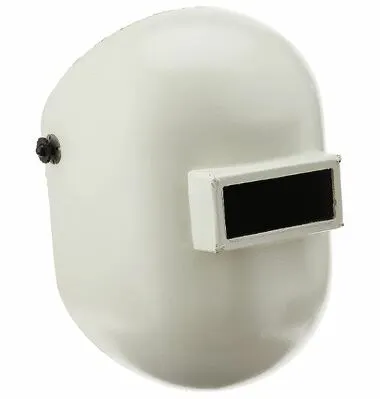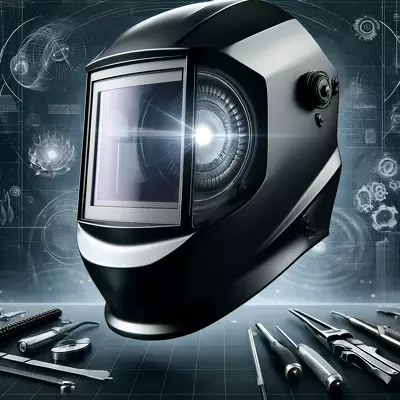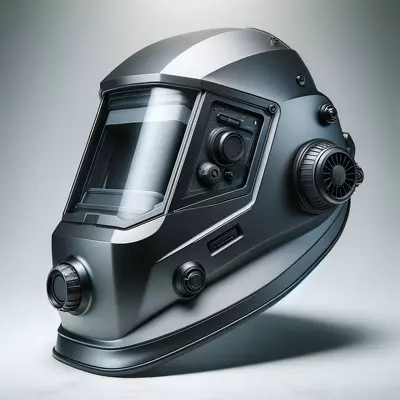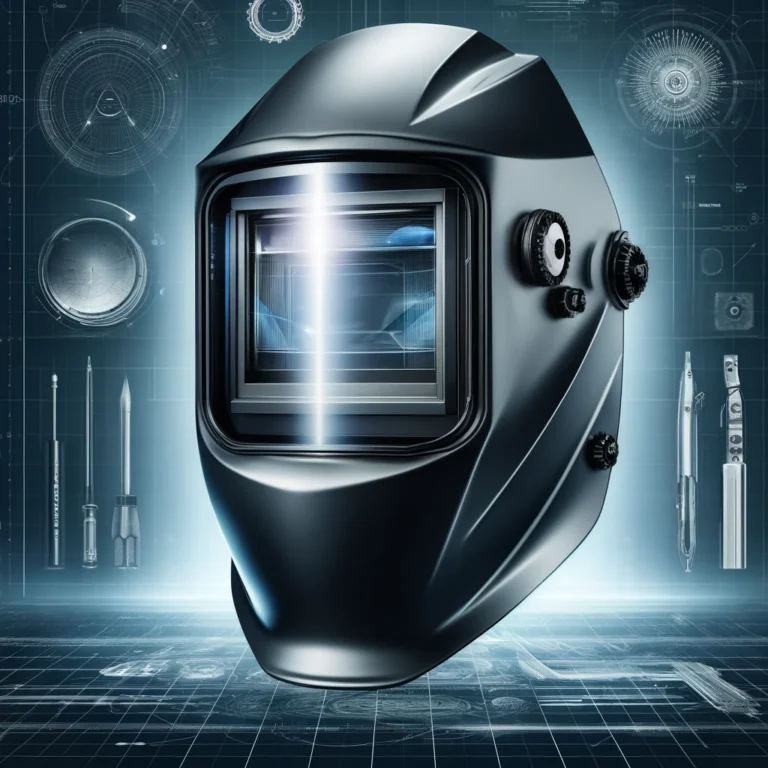Decoding the Elite Craft: A Journey Through the World’s Most Expensive Welding Helmets

In the realm of professional craftsmanship, the right protective gear is paramount for safety and efficiency. High-end welding helmets stand out not just for their robust construction but also for their advanced features, offering an unmatched fusion of protection, visibility, and comfort. They represent a significant investment, reflecting the seriousness with which artisans approach their craft and the challenging environments they navigate.
As an Amazon Associate, we earn a commission from qualifying purchases.
I. Introduction
A. Importance of Quality Welding Helmets
In the demanding field of professional welding, the significance of a top-tier welding helmet cannot be overstated. Serving not merely as a protective shield, these helmets are the first line of defense against the intense light, heat, and hazardous radiation that are inherent in welding tasks. High-quality helmets, especially the most expensive ones, blend superior protection with cutting-edge technology, ensuring that welders are safeguarded while benefiting from enhanced visibility and comfort during long, strenuous hours of work.
B. Overview of Features in Premium Helmets
Premium welding helmets are a class apart, equipped with advanced features that justify their price tag. They typically include auto-darkening filters, ensuring that welders are not exposed to harmful light levels. The clarity of the viewing lens in these helmets is unmatched, offering a realistic view of the weld puddle and surroundings. Moreover, they are designed for comfort, with lightweight materials and ergonomically designed headgear, reducing the strain on the welder’s neck and shoulders during extended periods of use.
II. Top Picks for Most Expensive Welding Helmets
A. ESAB Sentinel A50
- Advanced Features
The ESAB Sentinel A50 is not just a welding helmet; it’s a testament to the innovation in the field of welding safety. With its auto-darkening function and impressive 1/25,000-second lens switching speed, it ensures that welders are never exposed to harmful light levels. Its True Color lens technology provides a clear, realistic view of the weld area, significantly enhancing the precision of the work. - User-Friendly Design
The Sentinel A50 scores high on user-friendliness. Its lightweight design, coupled with a five-point adjustable headgear, ensures comfort even during long welding sessions. The helmet’s touchscreen control panel and intuitive design make it easy to adjust settings without removing the helmet, streamlining the welding process and enhancing productivity.
B. Miller Digital Infinity Series
- Cutting-Edge Technology
The Miller Digital Infinity Series stands out for its ClearLight Lens Technology. This technology offers a high-definition optics system that greatly enhances visibility, allowing welders to see more colors and, thereby, more details. This feature is crucial for precision work, where every detail matters. The helmet’s lens offers a vast viewing area, one of the largest in the industry, making it easier for welders to monitor their work without constant head movement. - Comfort and Convenience
Despite its advanced features, the Digital Infinity Series does not compromise on comfort. The helmet is designed with an oversized comfort cushion that ensures it sits snugly, reducing pressure points and fatigue. The strategically placed and intuitively designed digital controls add to the convenience, allowing for quick adjustments without interrupting the workflow.
C. Optrel Panoramaxx
- Superior Viewing Area
The Optrel Panoramaxx is renowned for its expansive viewing area, offering a panoramic view that is six times larger than that of standard welding helmets. This feature, combined with its TrueColor View technology, significantly enhances the welder’s visibility, ensuring a clear and broad view of the work area and minimizing the need for head movements. - Innovative Battery Technology
This helmet takes convenience a step further with its innovative battery technology. The Optrel Panoramaxx comes with a rechargeable Lithium-Polymer battery, eliminating the need for frequent battery replacements. This eco-friendly approach not only saves costs in the long run but also reduces the hassle for the welder, ensuring that the helmet is always ready for use.
III. Detailed Analysis of Selected Helmets
A. Safety and Protection
Safety is paramount in welding, and these helmets set the standard. Each model comes with certifications that guarantee they have passed rigorous impact tests and provide adequate protection against UV and IR rays. The auto-darkening feature in these helmets ensures that welders are not exposed to sudden arcs, protecting their eyesight and allowing them to focus on their work without interruptions.
B. Customization and Control
The ability to customize settings according to individual needs is what sets these helmets apart. Whether it’s adjusting the shade, sensitivity, or delay settings, each helmet offers a range of options that can be tailored to fit the specific requirements of each task. This level of control not only enhances safety but also improves the overall quality of the welding work.
C. Power Sources and Energy Efficiency
These helmets are designed with energy efficiency in mind. Options like solar panels and rechargeable batteries are not only environmentally friendly but also ensure that the helmets are always operational when needed. The inclusion of energy-saving features like auto-off ensures that the battery life is conserved, reducing the frequency of charges or battery replacements and ensuring that the helmet is as efficient as it is effective.
In conclusion, investing in a high-end welding helmet like the ESAB Sentinel A50, Miller Digital Infinity Series, or Optrel Panoramaxx is a wise choice for professional welders. These helmets offer the best in safety, versatility, and efficiency, making them a worthwhile investment for those looking to elevate their welding experience to the highest professional standards. By incorporating advanced technologies and prioritizing user comfort and safety, these helmets not only protect welders but also enhance their performance, ensuring that each welding task is executed with precision and ease.
IV. FAQs
Q: What are the key safety features to look for in a welding helmet?
A: Safety is paramount in welding helmets. Look for helmets that offer protection against UV and IR rays, have auto-darkening lenses to shield your eyes from sudden arcs, and comply with industry standards for impact resistance.
Q: How does an auto-darkening helmet work?
A: An auto-darkening helmet darkens automatically when it detects the bright welding arc, protecting your eyes from the intense light. It returns to a lighter shade when the welding stops, allowing clear visibility without the need to lift the helmet.
Q: Can the weight of a welding helmet affect my work?
A: Yes, the weight of a helmet can significantly impact your comfort, especially during long welding sessions. Lighter helmets reduce neck strain and fatigue, allowing for a more comfortable and productive work experience.
Q: What is the advantage of a large viewing area in a welding helmet?
A: A larger viewing area offers a broader view of the weld and surrounding area, reducing the need to move your head frequently. This can improve precision and comfort, especially in intricate welding tasks.
Q: How does the lens shade number in a welding helmet affect my protection?
A: The lens shade number indicates the level of darkness provided by the auto-darkening lens. Higher numbers mean darker shades, providing more protection against intense light. The appropriate shade number depends on the welding process and the brightness of the arc.
Q: Does the power source of a welding helmet matter?
A: Yes, the power source affects the convenience and usability of the helmet. Helmets with solar panels need exposure to light to charge, while those with batteries offer more flexibility. Consider your working conditions and frequency of use when choosing the power source.
Q: What is a cold welding machine?
A: A cold welding machine is a device that joins materials, usually metals, without significant heat input, avoiding the melting of the materials. It’s typically used for delicate or precision welding tasks where heat could cause damage or distortion.
Q: What is the best aluminum welder for beginners?
A: Beginners should look for an aluminum welder that is user-friendly and offers versatility for different welding tasks. MIG welders are generally considered good for beginners due to their ease of use and efficiency with aluminum.
V. Conclusion
A. Best Offer
The ESAB Sentinel A50 stands out for its combination of advanced features, user-friendly design, and safety. Its superior auto-darkening capabilities and large viewing area make it an excellent choice for professional welders seeking top-notch performance.
B. The Alternative
The Miller Digital Infinity Series is an excellent alternative, offering cutting-edge technology and a focus on comfort and convenience. Their ClearLight Lens Technology and oversized comfort cushion make them a prime choice for those prioritizing visibility and comfort.
VI. Suggested Readings
Before diving into the list of suggested readings, it’s crucial to recognize the value these books hold. They are more than just guides; they are gateways to mastering the art of welding, offering insights from basics to advanced techniques.
- “Welding For Dummies” by Steven Robert Farnsworth – A beginner-friendly guide that makes welding concepts accessible and easy to understand, covering everything from equipment to safety.
- “Farm and Workshop Welding” by Andrew Pearce – A comprehensive handbook for not just farmers but anyone interested in DIY welding, offering practical guides on various welding techniques and safety.
- “How to Weld” by Todd Bridigum – An all-encompassing guide detailing various welding processes and techniques, rich with exercises and colored photos for a realistic understanding.
- “Ready, Set, Weld!” by Matin Kimberli – Ideal for beginners, this book focuses on DIY welding for home and garden projects, offering step-by-step instructions with high-quality images.
- “Welding: Principles and Applications” by Larry Jeffus – A thorough, encyclopedia-like book for those aiming to dive deep into welding. It covers a wide array of topics, from shop math to advanced welding techniques, making it a valuable resource for both students and experienced welders.
Each of these books is a treasure trove of knowledge, whether you’re taking your first steps in welding or looking to refine your skills. They offer a blend of theoretical knowledge and practical advice, ensuring that you’re well-equipped to tackle any welding challenge. Happy reading and welding!






